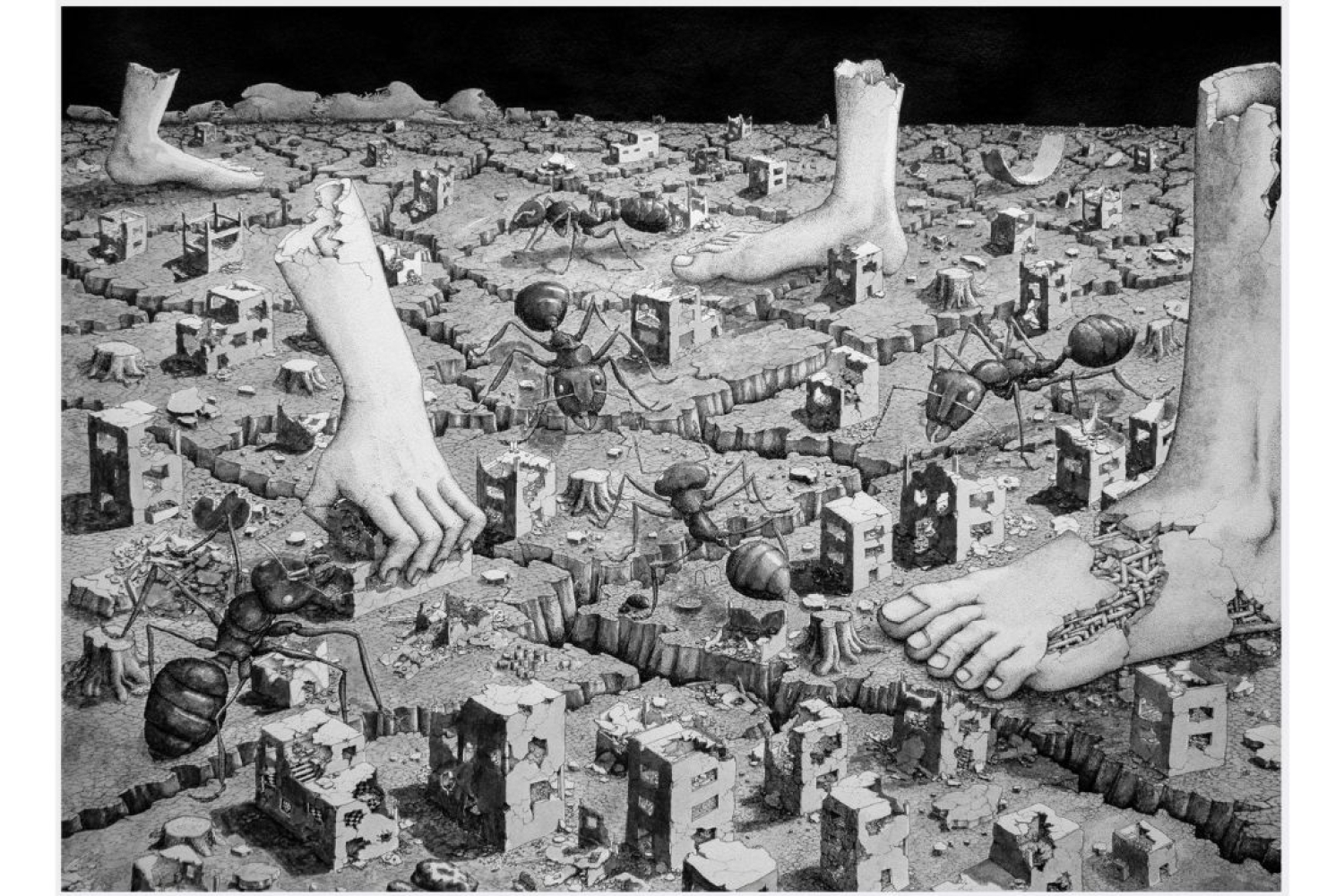
Apophenia; Casual Thoughts of Doom

Apophenia; Casual Thoughts of Doom
Dheer Kaku’s art serves as a silent witness to the ebb and flow of architecture. His project ‘Casual Thoughts of Doom’ narrates the tales of numerous building ruins and our natural surroundings, considering them as conduits of communication spanning centuries. In addition to his intrigue with architectural remnants, Kaku is captivated by surrealism for its limitless creativity and profound symbolism.
In our conversation with him, we delve into his creative process, artistic philosophy and more.
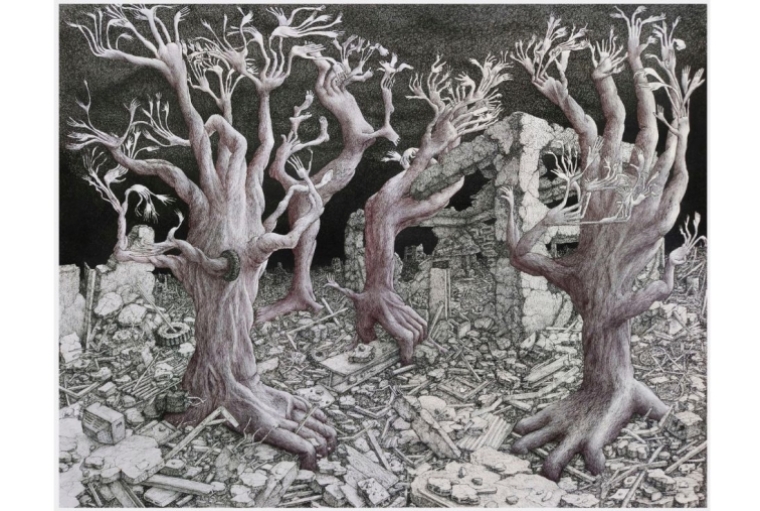
You seem to have a penchant for the ruins of architecture in your drawings, why?
I have always found architecture to be a form of art that is designed to endure even as the civilizations that inhabit it fade away. The architecture of the past, carved into rock and stone seems to embody this idea much more effectively, giving these structures the ability to communicate across centuries. This raises the question of what happens to the architecture of the present, centuries into the future when longevity is replaced by convenience, and there is a visible divide between form and function. What happens to objects built on the premise of planned obsolescence, designed with an artificially limited useful life, or intentionally frail design such that it becomes obsolete in a predetermined period? Do the stories told by these objects constantly change with the changing context in which they’re viewed, or do they simply become unintelligible and inaccessible?
The themes I have been experimenting with since the beginning of my artistic practice have been archaeological anthropology – the study of humanity through material remains – and questions of time and consciousness. These subjects run deep in my veins and are the primary curiosities from which I draw my interests and inspirations. My interest extends to the findings from neolithic and pre-neolithic periods like Göbekli Tepe and Karahan Tepe in Turkey that have challenged the conventional theory of how we went from hunter-gatherers to who we are now. I aim to apply this understanding to the study of artefacts of our present, to explore the possibilities of how they may be perceived in the future – which is the basis for my series ‘Casual Thoughts of Doom.’
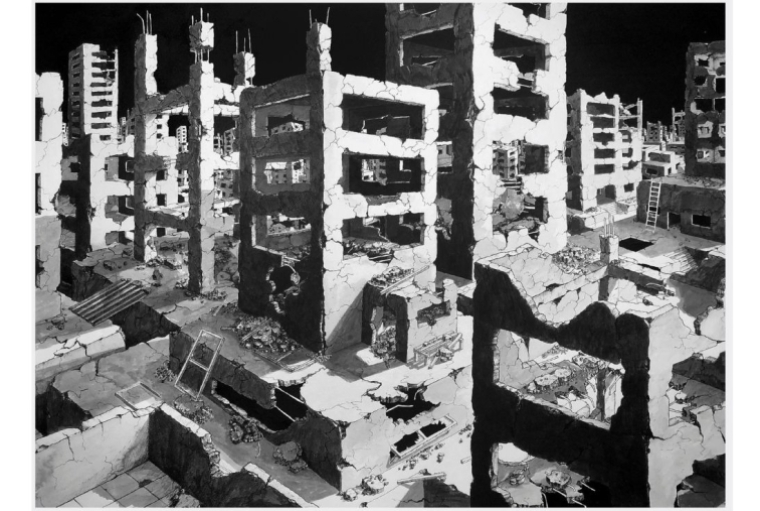
Half-Measures; Casual Thoughts of Doom
What attracts you towards surrealism?
The surrealist movement and its history for me is just an indicator of how far the boundaries of imagination have been pushed. Surrealism has given us all a vocabulary to understand complex visuals and their symbolic and contextual references, I am just not sticking to any rules of representing “realistic” visuals or any defined perspective and so my work automatically falls into the surrealism category. To me, we are just talking about different forms of abstraction and symbolism.
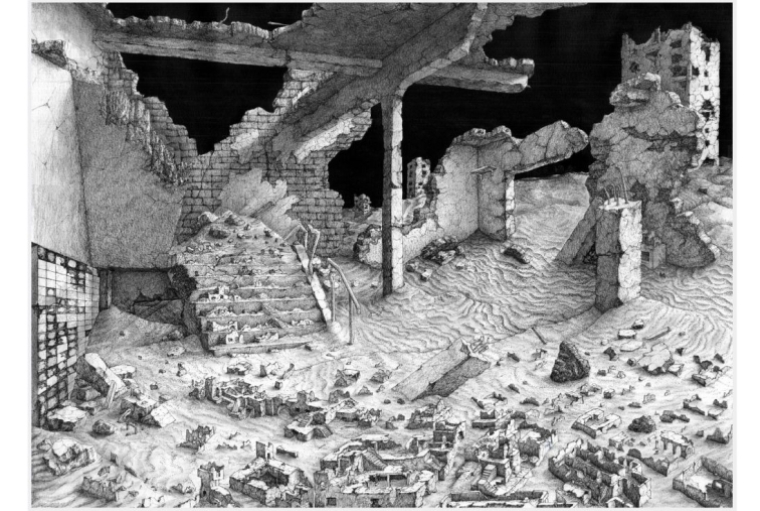
Head in the Sand, Casual Thoughts of Doom
What sparked your interest in photography and film?
The use of multiple mediums and new techniques of art-making has always been an important goal of my practice. There’s something I like doing more than making art and that’s learning new things, everything new I learn compliments the things I’ve learned before and ultimately, it deepens my understanding of myself and the world around me. The ‘art-making” has become the result of an automatic urge to test and experiment with the ever changing perspectives of my environment.
What is your creative process? How does it all take shape?
I developed this habit in art school where I’d start to automatically draw cubes and geometric lines as soon as the pen touched the paper. In the following years, the cubes turned into buildings, and then buildings turned into broken walls and ruins. My drawing process has essentially remained the same, I have just added more and more steps in the process.
When I start a new drawing these days, I generally begin with drawing out the interior of a building space or drawing cubes on a landscape, I draw out the detailed confines of a space and then slowly start breaking it apart by drawing cracks and gaps in the structures and walls. I start imagining what could be behind the gaps or drawn around it. Then I start adding objects and detailed elements of rubble and ruin until my wrists hurt and then I declare the drawing to be complete.
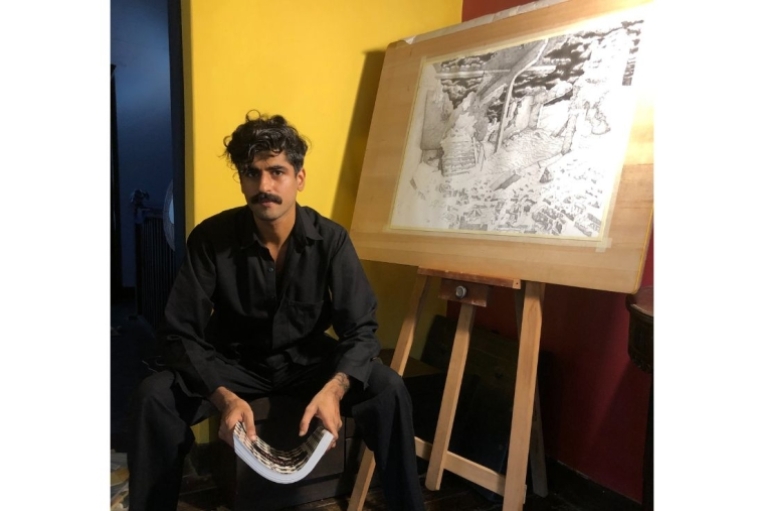
Dheer Kaku
What's your next project?
I am currently working on three different projects, I have talked a bit about my longest project so far “Casual Thoughts of Doom”, this series of works represent my projections of a distant reality.
“Dots Make Lines” is an attempt to depict points of overlap between discovery and invention, and the systems prevalent in nature. This series of works uses number theory, shapes, tiling patterns, and music to find common threads between art, math, and science.
My current experimentation involves the use of prime numbers as both a structural and aesthetic element. Each prime is a brushstroke, a pixel, or a note in a symphony, contributing to the overall composition. The choice of primes is not just for their numerical significance but for the challenge they pose. Their irregularity, unpredictability, and elusive nature become the foundation upon which I draw visual narratives.
“An autonomous mind” is a project where I reflect on my own personal journey and mental health. This project is quite new and I have a lot to discover before I can say more about this right now.